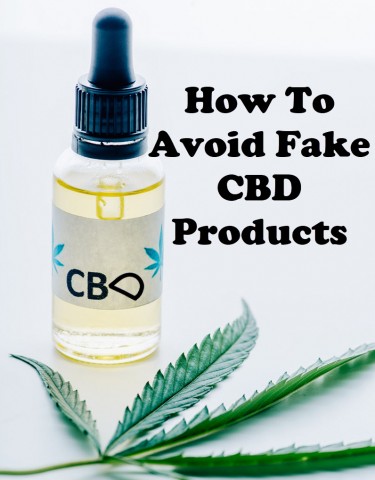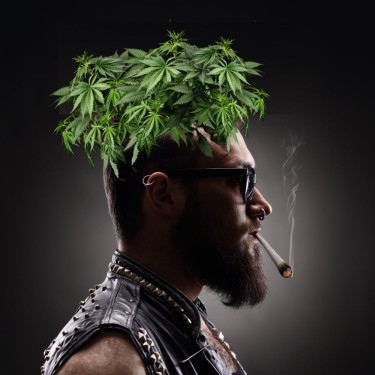Cannabis News
Amazon is Selling Weed and Doesn’t Even Know It
Published
2 months agoon
By
admin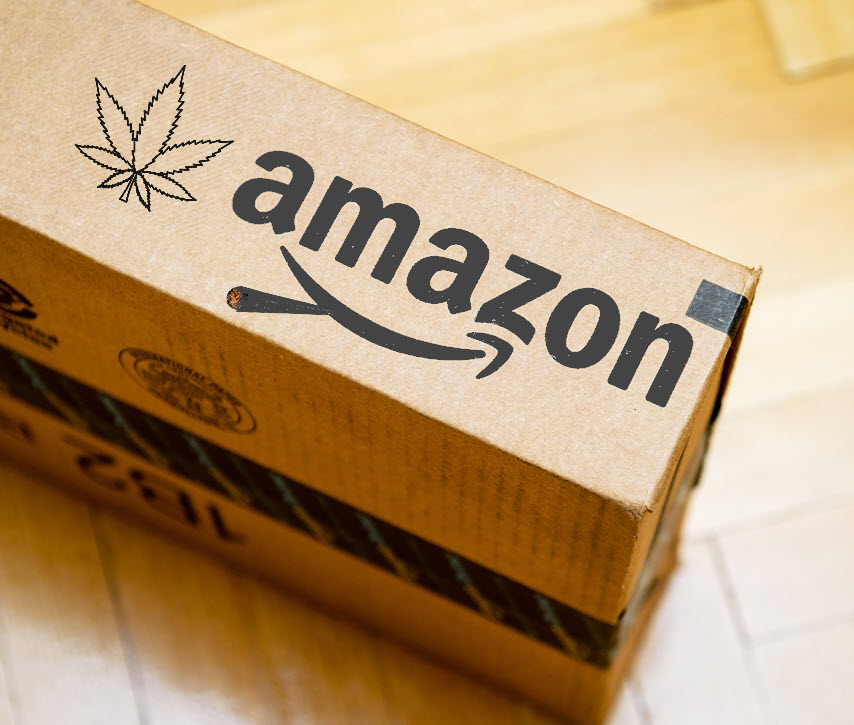
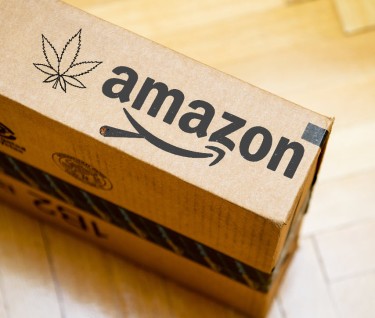
A recent investigation conducted by CBD Oracle has revealed concerning revelations regarding the availability of “hemp gummies” on major e-commerce platforms such as Amazon.com Inc (NASDAQ:AMZN), Walmart Inc (NYSE:WMT), and eBay Inc (NASDAQ:EBAY). Despite the stringent regulations against CBD and THC, thorough lab examinations have shown that many of these products contain notable amounts of delta-8 THC, a substance prohibited in numerous states.
The meticulous research by CBD Oracle involved the purchase of 56 hemp items from Amazon, including gummies and tinctures, which were then subjected to laboratory testing by InfiniteCAL Labs. The outcomes were unsettling: 30% of the products contained undisclosed CBD, violating federal guidelines, while a staggering 43% lacked any hemp-related ingredients altogether, essentially rendering them overpriced confectionery items.
Of particular concern was the identification of products with elevated levels of delta-8 THC, a psychoactive compound banned in various states. The analysis pinpointed three products with dangerously high concentrations of delta-8 THC, with the most potent gummy containing 76 mg of THC per piece, far surpassing legal limits for cannabis edibles.
Erik Paulson, PhD, the lab manager at InfiniteCAL, remarked in a press release, “If individuals are purchasing these hemp gummies from Amazon under the assumption that they will derive benefits from the contained hemp, then it’s akin to playing a game of chance. You might receive CBD-infused, THC-infused, hempseed oil-infused products, or quite possibly, a product devoid of hemp altogether.”
Furthermore, the study illuminated a prevalent issue with deceptive marketing strategies. An overwhelming 96% of products failed to provide accurate dosage information, and over half of the product descriptions made unauthorized medical assertions, potentially misleading consumers regarding the benefits of these products.
CBD Oracle’s findings underscore a market inundated with misleading practices, where unverified and potentially harmful products can easily reach unsuspecting consumers. The report urges prompt action from Amazon and other online retailers to address these concerns, advocating for stricter enforcement or reconsideration of policies concerning CBD and hemp products.
Consumer Safety Compromised: Delta-8 THC Uncovered in “Hemp Gummies”
CBD Oracle’s study has revealed a startling fact despite claims of safety and legality: a large number of “hemp gummies” sold on well-known e-commerce platforms contain high concentrations of delta-8 THC, which puts customers’ health in danger. Not only is the psychoactive chemical delta-8 THC illegal in many places, but it can also be dangerous, especially if taken accidentally or in excess.
The discovery of delta-8 THC in these goods highlights a serious gap in regulatory oversight and quality control within the hemp and CBD industries. Consumers who often seek out health goods or natural remedies face the danger of inadvertently exposing themselves to the harmful effects of delta-8 THC, which include impairment, anxiety, and other psychoactive symptoms.
This research emphasizes how important it is to have strict regulations and thorough testing procedures in place to guarantee the purity and safety of CBD and hemp products. In the absence of strict protocols, gullible customers continue to be exposed to the risks associated with items that are mislabeled or have not undergone appropriate testing and are marketed as “hemp gummies.”
Lack of Transparency on Dosage and Ingredients
The investigation conducted by CBD Oracle has brought to light not only concerning levels of delta-8 THC but also the prevalence of deceptive marketing practices within the CBD and hemp product industry. One of the most glaring issues identified is the lack of transparency regarding dosage information and product ingredients. With a staggering 96% of the products failing to provide accurate dosage information, consumers are left in the dark about the potency and potential effects of the products they purchase.
Moreover, many product descriptions make unauthorized medical claims, misleading consumers about the purported benefits of these items. This deceptive marketing tactic not only undermines consumer trust but also poses significant health risks, as individuals may rely on inaccurate information when making purchasing decisions. The absence of regulatory oversight allows such misleading claims to proliferate unchecked, further exacerbating the confusion and uncertainty surrounding CBD and hemp products.
It’s also problematic that the product’s components are not clearly stated. Given that 43% of the commodities examined had no components associated with hemp, consumers are left to doubt the reliability and effectiveness of the products they purchase. People who don’t have accurate ingredient lists and clear labeling may inadvertently consume things that don’t fit their dietary restrictions or expectations, which might cause allergic reactions or other unpleasant side effects.
All things considered, the frequency of dishonest marketing tactics emphasizes how urgently the CBD and hemp product businesses require more regulations and enforcement actions. Clear labeling, accurate dosage information, and sincere marketing strategies are essential for guaranteeing consumer safety and confidence in these gaining popularity products. In order to hold manufacturers and sellers responsible for making false claims and providing insufficient product disclosures, regulatory bodies and e-commerce platforms need to act decisively.
Urgent Measures Needed to Regulate CBD and Hemp Product Market
The revelations from CBD Oracle’s investigation call for immediate action from both regulatory bodies and e-commerce platforms. With widespread deception and potential health risks associated with “hemp gummies,” urgent measures are needed to regulate the CBD and hemp product market effectively. Regulatory agencies must prioritize developing and enforcing stringent standards to ensure the potency, purity, and safety of these products. By implementing clear guidelines and holding manufacturers accountable for compliance, regulators can prevent the distribution of mislabeled or adulterated products that pose risks to consumers.
Giants in the e-commerce space like Amazon, Walmart, and eBay also need to be proactive in stopping dishonest marketing techniques on their sites. To guarantee that product listings meet legal requirements and do not make deceptive claims about the efficacy or advantages of CBD and hemp products, stronger procedures must be put in place. Platforms should place a high priority on transparency by giving users accurate information on the dose, ingredients, and possible hazards of these goods. This will enable users to make well-informed decisions about their purchases and health.
Bottom Line
The findings of CBD Oracle’s investigation underscore the critical need for immediate action to safeguard consumers and ensure the integrity of the CBD and hemp product market. Regulatory bodies must implement stringent standards and enforcement measures to prevent the distribution of unsafe or mislabeled products. Likewise, e-commerce platforms must take proactive steps to address deceptive marketing practices and provide transparent information to consumers. By working together to enforce regulations and promote transparency, we can create a safer and more trustworthy marketplace for CBD and hemp products, ultimately protecting the well-being of consumers.
AVOIDING PRODUCTS WITH NO HEMP OR CBD IN THEM, READ ON…
You may like
-


Can Cannabis Enhance The Northern Lights
-


Marijuana Gummies Can Make Weddings Easier
-


Minnesota Cannabis Producers Given the Greenlight after Momentarily in Limbo
-


$9 Billion in Revenue and $2 Billion in Losses
-
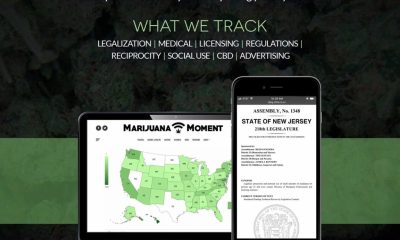

Florida Marijuana Legalization Measure Has Enough Support To Pass In Internal Polling, CEO Of Company Funding Campaign Says
-
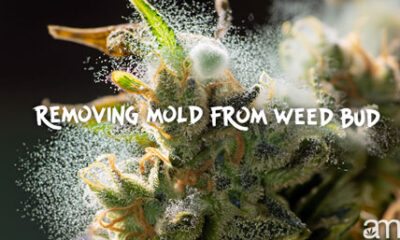

Effective Mold Management for Cannabis Plants
Cannabis News
Minnesota Cannabis Producers Given the Greenlight after Momentarily in Limbo
Published
7 hours agoon
May 10, 2024By
admin
Minnesota cannabis producers have raised concerns over the availability of products when the legal market finally opens. In response, the Minnesota legislature has acted quickly to allow an avenue for early cultivation providing key guidance for the forthcoming Minnesota legal cannabis market. Noting these concerns, industry participants have asked the Minnesota Office of Cannabis Management (OCM) and their local legislators to consider opening cultivation and production of cannabis products early, in order to supply retailers with legal products to sell once licenses are awarded and retailers open for business.
The OCM’s problematic decision not to endorse or seek immediate changes for Minnesota cannabis production
The OCM issued a statement recently indicating it will not ask for changes to the current laws that would allow some cannabis cultivators to start growing plants early as a way to have products available and ready for retail when stores open sometime in early spring of 2025. The OCM notes that they remain receptive to proposals that could pave the way for early production, but are not seeking immediate action at this time. This recent decision highlights the issues and complexities of introducing a new legal cannabis market into an already existing marketplace. The main issue surrounds how legal retailers could open for business if they do not have any legal cannabis products to sell.
The OCM suggests additional delays could occur
One option would be to rely on existing medical cannabis rules for early cultivation. However, concerns that issuing producer licenses contemporaneously with retail licenses would cause unnecessary delays, are met with concerns over unnecessary delays from the OCM. The OCM notes that reliance on the existing medical cannabis rules presents inherent flaws, particularly in accommodating outdoor farms and ensuring equitable opportunities for social equity applicants. Allowing for early cultivation under the existing medical cannabis requirements only exacerbates challenges faced by social equity applicants and would place legal producers outside of the existing medical regulatory framework at a disadvantage.
Despite concerns legislators took action and have provided a proposal for early cultivation
Senator Lindsey Port spearheaded amendments, which culminated in floor debate lasting over six hours. In response to the challenges facing producer and retail licenses, as well as accommodating outdoor farms, ensuring equal access for social equity applicants, or allowing early cultivation under the existing medical cannabis regulatory framework, legislators are took up the issue and provided additional proposals. The amendments were aimed at facilitating early cultivation, an essential step towards nurturing a robust and inclusive cannabis market. These amendments seek to grant permission for early production to social equity producers, addressing the imperative of equitable participation in the anticipated Minnesota legal cannabis industry. By integrating the existing medical cannabis regulations with newly proposed social equity pre-approved licenses, Senator Port’s amendments offer a pragmatic framework for expediting cultivation timelines while safeguarding the interests of diverse stakeholders.
Early cultivation is key to a strong launch
The significance of early cultivation cannot be overstated in the context of Minnesota’s nascent legal cannabis market. Not only will Minnesota’s legal cannabis market be forced to compete with the existing illegal market, the same as every other state, but the new legal market will also be competing with the existing THC beverage and lower-potency hemp edible markets. Early cultivation holds the key to undermining the influence of illicit markets and channeling demand towards legal and regulated avenues, but only if the legal cannabis market can get a strong launch. Moreover, early cultivation will serve as a lifeline for small businesses and social equity applicants, affording them a crucial head start and robust launch in an industry characterized by fierce competition and evolving regulatory dynamics.
Licensing and lottery system concerns for Minnesota cannabis producers
Understanding the nuances of licensing is integral to navigating Minnesota’s cannabis marketplace. Although licenses will not be issued until early 2025 at the earliest, and the full regulatory framework has not been finalized, producers and cultivators will have access to three distinct production license categories – bulk cultivators, mezzo licenses, and micro licenses. Each category carries with it separate requirements and allowances regarding canopy space, facility size, quality control requirements, staffing protocols, and more. Notably, lower-potency hemp cultivation and sale remain exempt from canopy caps, presenting another wrinkle or opportunity within the overall regulatory framework.
Although the outline has been set regarding cultivation, mezzo and micro licenses, uncertainty remains regarding the license lottery system. This uncertainty was also exacerbated by the issues surrounding whether, and how, Minnesota would allow early cultivation. Some cultivators raised concerns over what might happen if they are able to begin early cultivation but then lose out on the later license lottery. Others worried that if they do not begin cultivating early, they could forfeit additional points that could have secured them a license. Disruptions to the point-based allocation mechanism also raise pertinent questions regarding fairness and transparency through the licensing process. Addressing apprehensions surrounding straw applicants and ownership transparency is paramount to fostering trust and accountability within the OCM and its regulatory framework. It’s promising to see Minnesota legislators and regulatory agencies working in conjunction to address these issues early in hopes of fostering a robust market.
Leadership is critical for Minnesota cannabis program success
Establishing a flourishing cannabis market will require a form of early cultivation and production to ensure retailers are stocked with products to sell at launch and both the Legislature and the OCM are aware of that fact and working towards addressing these issues. The OCM’s leadership and decision-making on these issues have the potential to reshape and drive the trajectory of Minnesota’s legal cannabis market as we approach the much-anticipated retail launch in early spring of 2025. As Minnesota moves towards that launch, the discourse surrounding early cultivation serves as a litmus test for regulatory agility and stakeholder collaboration. By navigating the complexities of licensing, and regulatory concerns, and addressing the imperative early cultivation period, Minnesota is poised to address many tough questions and policy dilemmas before a single seed is sown or a single flower is sold under the new legal cannabis market.
Cannabis News
$9 Billion in Revenue and $2 Billion in Losses
Published
8 hours agoon
May 10, 2024By
admin

The “marijuana mullet” is back with avengence in the cannabis industry as great top-line, headline-shocking, numbers for revenue got released with the usual massive losses on the bottom line, as usual.
Last year, an analysis of public filings by Green Market Report revealed that among the twenty largest publicly traded marijuana companies in the U.S., only one managed to turn a profit, while the rest collectively incurred a hefty $2.3 billion in losses. Despite generating over $8.7 billion in revenues altogether, these vertically integrated operators, with retail outlets, cultivation facilities, and manufacturing plants across various states, struggled to remain profitable.
These financial figures offer a glimpse into the overall performance of the cannabis sector. In 2022, a similar examination of financial filings indicated that merely two out of twenty-four public cannabis companies were profitable, with the sector as a whole facing losses exceeding $4 billion. However, it appears that losses have notably decreased year-over-year, signaling potential improvements in the industry’s financial landscape.
Top Performers and Underperformers
Green Thumb Industries (CSE: GTII) (OTCQX: GTBIF), based in Chicago, became the only cannabis firm to record net profits in 2023, with a $36.3 million profit on top of an amazing $1.1 billion in sales. This was a huge increase above its $12 million profit in 2022, demonstrating a stunning triple of yearly earnings.
In contrast, Florida’s Trulieve Cannabis Corp. (CSE: TRUL) (OTCQX: TCNNF) experienced the most significant setback of the year, with a whopping $527 million loss compared to $1.13 billion in sales.
However, Trulieve was not alone in its financial struggles. Curaleaf Holdings (TSX: CURA) (OTCQX: CURLF) of New York incurred losses of $281.2 million, despite leading in revenue among the twenty companies with an impressive $1.35 billion.
GTI, Trulieve, and Curaleaf were the exclusive trio to surpass the $1 billion revenue mark last year.
Other notable underperformers include:
– Ayr Wellness (CSE: AYR.A) (OTCQX: AYRWF), a Florida-based multistate operator, recorded a loss of $272 million.
– Cresco Labs (CSE: CL) (OTCQX: CRLBF) (FSE: 6CQ), headquartered in Chicago, faced losses amounting to $180 million.
– The Cannabist Co. Holdings Inc. (NEO: CBST) (OTCQX: CBSTF) (FSE: 3LP) from New York, reported losses of $174 million.
– Verano Holdings Corp. (Cboe CA: VRNO) (OTCQX: VRNOF), based in Chicago, incurred losses totaling $113 million.
The widespread financial struggles within the industry underscore the urgency behind potential regulatory changes, such as the Biden administration’s proposed shift of marijuana from Schedule I to Schedule III. Such a move could alleviate the industry’s tax burdens, potentially saving hundreds of millions annually, as estimated by various sources. However, the timeline for realizing these savings remains uncertain.
Market Upheaval
The dissimilarity between the evaluations from this year and the previous year emphasizes the volatility of the market, which is further emphasized by the removal of four firms from this year’s list.
MedMen Enterprises (CSE: MMEN) (OTCQX: MMNFF), one of the absentees, has essentially filed for bankruptcy. Due to a change of auditors, StateHouse Holdings (CSE: STHZ) (OTCQB: STHZF) and Vext Science (VEXTF) have not yet submitted their full-year financial reports to securities regulators.
The fourth omission, secondary multistate operator Red White & Bloom Brands (CSE: RWB), reported losses of $104.9 million and carried a debt of $240 million in the previous year, against revenues of $88.3 million disclosed in April.
According to Matt Karnes, Founder of GreenWave Advisors, the persistent losses stem from the exorbitant costs of operating within the federally illegal U.S. marijuana industry.
“Profitability and cash generation are formidable challenges,” Karnes remarked. “This underscores the urgency for government intervention… because financial resources are depleting rapidly. Section 280E is proving to be detrimental to all.”
Karnes acknowledged additional factors contributing to the sector’s financial downturn, including misplaced optimism surrounding the initial public offerings of many fledgling companies in recent years, and an underestimation of the competitive pricing in the illicit marijuana market.
Furthermore, political advancements at the federal level have been notably delayed compared to earlier industry expectations, resulting in failed expansion endeavors, unproductive infrastructure investments, and widespread price pressures, all culminating in diminished profit margins for the cannabis sector.
“The inability to accurately forecast when these dynamics will change, to decipher the political landscape effectively, presents significant challenges,” Karnes concluded regarding the ongoing financial setbacks. “This uncertainty remains a substantial obstacle.”
Emerging Trends and Future Outlook
Even in the face of economic uncertainty, several new developments in the cannabis sector point to possible directions for expansion and stability. The growing focus on cost control and operational efficiency is one such trend. Businesses are actively looking for creative ways to save expenses by simplifying their processes, allocating resources as efficiently as possible, and lowering overhead. These businesses want to improve their bottom line and lessen the effects of market and regulatory uncertainty by concentrating on efficiency.
The diversity of product offerings and market tactics is another noteworthy development. Companies that deal with cannabis are branching out from typical flowers and investigating new product categories including drinks, topicals, edibles, and wellness items. Targeting specialized markets and customer groups and customizing items to fit their requirements and tastes is also becoming more and more important. By lowering reliance on any one product or market segment, this diversification not only increases the variety of revenue streams but also fortifies the resilience of the market.
Looking ahead, the industry’s future prognosis is heavily reliant on regulatory developments and policy changes. The Biden administration’s prospective reclassification of marijuana from Schedule I to Schedule III may have far-reaching consequences for the business, including lower tax costs and better access to financial services. However, the timing and breadth of regulatory changes are unknown, providing hurdles for businesses navigating the changing regulatory landscape. Despite these uncertainties, ongoing innovation, strategic adaptability, and a focus on long-term sustainability will be critical in determining the cannabis industry’s resilience and development prospects in the coming years.
The other main problem the industry may never be able to overcome is, as Jeff Bezos put it so well, “your margins are my opportunity“. Once the 280E tax breaks get worked through the system, and that cash bonanza gets dispursed, the industry will always face the unrelenting pressure of the illicit or black market. As soon as prices start to get too high, where stores and brands start to increase margins, the illicit market will become that much more appealing for their lower prices. If the legal industry tries to push prices too high, the black market will snag market share from more price conscious consumers. There is a glass ceiling on how high the legal market will ever be able to raise their prices due to price pressures on the black market.
While consumers may pay for the appearance of safety through lab testing and the convience of a brick-and-mortar store, the fact remains that cannabis flower is 60% cheaper on the illicit market and edibles can be up to 93% cheaper when local and state taxes are taken into account. People will price shop when the spread between legal products and illicit products widen to unreasonable amounts.
Bottom Line
The cannabis industry’s financial struggles, as highlighted by the significant losses incurred despite substantial revenues, underscore the need for regulatory reforms and operational adaptations. While some companies have managed to thrive, many others have faced considerable setbacks, grappling with challenges ranging from regulatory constraints to market volatility. The emergence of new trends, such as cost management initiatives and product diversification, offers avenues for growth and resilience in the face of uncertainty. However, the industry’s future trajectory will largely depend on the pace and scope of regulatory changes, as well as companies’ ability to innovate and adapt to evolving market dynamics.
Margin compression and the ever-looming black market may always create a glass ceiling for cannabis product prices going forward. Push to hard on a string and the consumer will look to save up to 85% on prices by finding a new piece of twine.
THE MARIJUANA MULLET, GREAT ON TOP, BAD ON THE BOTTOM, READ ON…
Cannabis News
Do Psychedelic Mushrooms Have an Entourage Effect Similar to Cannabis?
Published
1 day agoon
May 9, 2024By
admin

Understanding How The Entourage Effect Works In Psychedelic Mushrooms
Learn fascinating ways about how magic mushrooms work!
Most of us are already familiar with the entourage effect in marijuana. In essence, the entourage effect means that the therapeutic compounds in cannabis work more efficiently with one another, synergistically, to provide health benefits that are more powerful compared to when we take compounds on its own. While there are cannabis products that isolate THC and CBD, the science tells us that taking flower or full-spectrum form, where other cannabinoids and terpenes are present, are much more effective than one compound on its own.
The concept of the entourage effect was discovered in 1999 by none other than Raphael Mechoulam, the famous godfather of THC. Up until recently, most of what we know about the entourage effect has been limited to cannabis plants.
Now, there’s new data suggesting that the same can be observed when medicating with psychedelic mushrooms.
After all, psilocybin mushrooms – just like marijuana – also contain a complex array of other compounds, not just the star compound they are known for. While we do have some knowledge of how psilocybin works in the body thanks to clinical tests, keep in mind they do make use of synthesized psilocybin for research most of the time.
According to a recent study, psilocybin extracts may have more powerful health benefits for treating depression, OCD, anxiety, and PTSD to name a few because of the other psychoactive as well as non-psychoactive compounds in the mushroom. “My colleagues and I are very interested in the potential of psychedelics to treat serious, treatment resistant psychiatric disorders such as depression, PTSD, OCD and even schizophrenia,” explains Bernard Lerer, study author and a psychiatry professor and director at the Hadassah BrainLabs Center for Psychedelic Research at Hebrew University.
“There are many anecdotal and clinical reports which suggest that extract of psilocybin-containing mushrooms may have unique effects that are qualitatively and quantitatively different from chemical psilocybin, and also some preclinical studies. This observation has important clinical implications and we wanted to test it empirically in a laboratory study,” they said. So for the study, the researchers compared naturally-derived mushroom extracts to chemically made psilocybin, with the intention of discovering whether the other compounds within the extract can provide benefits that are not found when consuming isolated psilocybin.
The researchers utilized male adult mice for the trials; they were divided into groups: some were given the naturally occurring mushroom extracts, while the others were given the synthetic psilocybin. Meanwhile, others were given a control solution made of saline. Additionally, the researchers analyzed the heat twitch response (HTR) assay, which is a reputable method for analyzing the impacts of psychedelics on mice. Furthermore, the researchers analyzed the mice in a molecular and biochemical level to understand any synaptic protein expressions within the brain, which are features of neuroplasticity.
The results were astonishing: they found that the brains of the mice who were given the naturally occurring mushroom extracts showed more significant neuroplasticity markers through the presence of synaptic proteins, specifically GAP43, SV2A, PSD95, and synaptophysin. Since these proteins are required for development, synaptic growth, and neuroplasticity, these findings suggest that naturally occurring mushroom extracts may indeed have a more powerful impact compared to psilocybin isolate.
“Our findings need to be confirmed in human studies but they do suggest that there may be therapeutic advantages to psilocybin-containing mushroom extract over chemically synthesized psilocybin, when both are administered at the same psilocybin dose,” explains Lerer to Psypost.
So Much We Need To Uncover In The World Of Mushrooms
When magic mushrooms are cultivated and extracted naturally, the sub metabolites of the plant remain intact, unlike the isolated versions that are synthetically produced in a laboratory since it only contains psilocybin. There are several examples, such as the Baeocystin tryptamine, which can induce mild hallucinogenic effects. Beta-carbolines have also been discovered in psychedelic mushrooms, which can effectively help metabolize psilocin in the human body, causing a more intensive psychedelic experience.
But Why Is It Harder To Study Mushrooms Compared To Marijuana?
While the entourage effect of cannabis is already widely studied and better understood, the opposite is true when it comes to psychedelic mushrooms. There’s still so much we need to understand and study better; rodent studies are a start but translating them to humans is a whole other ball game. In addition, other experts have already acknowledged the challenges of identifying such impacts of the entourage effect.
For instance, Alan Rockefeller, a renowned mycologist who specializes in DNA sequencing as well as photography of fungi, tells Psychedelic Health: “No one really knows whether the entourage effect occurs with mushrooms.”
He goes on to elaborate the difficulties associated with studying mushrooms: “It is difficult to study because the same batch of mushrooms will have different effects in different people, and the same person on different days,” Rockefeller said. Also, it’s difficult to understand which compounds are active in a plant or mushroom, and how large the impact is for the active compounds. Researchers also need to understand the concentrations of each compound, and how different growing environments or processing can impact it.
“There are a dozen different tryptamines that can occur in mushrooms, plus a few beta-carbolines and hundreds of other molecules – so there is probably more than just psilocybin having an effect,” Rockefeller said. “Studying one compound at a time is hard enough, studying mixtures of hundreds of compounds is much more difficult. Without pure compounds, it is difficult to get repeatable results,” Rockefeller said. “It is possible that the therapeutic potential is different depending on the different compounds in the mushrooms. It’s also possible that psilocybin is the only thing that matters, and the other compounds are mostly inactive,” he said.
Conclusion
There’s so much yet that we need to know about how psychedelic mushrooms work. However, the possibilities that can be brought about by harnessing the power of the entourage effect in magic mushrooms is incredibly exciting. There is so much potential in this field that we can only truly uncover with more studies.
ARE PSYCHEDELICS CANNABIS 2.0? READ ON…

Can Cannabis Enhance The Northern Lights

Marijuana Gummies Can Make Weddings Easier

Minnesota Cannabis Producers Given the Greenlight after Momentarily in Limbo

$9 Billion in Revenue and $2 Billion in Losses
Florida Marijuana Legalization Measure Has Enough Support To Pass In Internal Polling, CEO Of Company Funding Campaign Says

Effective Mold Management for Cannabis Plants

The Future Of Cannabis After Rescheduling

Stormy Daniels Is Immortalized With A Marijuana Strain

Tips To Building Better Relationships

May 2024 Leafly HighLight: Pink Runtz strain

Distressed Cannabis Business Takeaways – Canna Law Blog™

United States: Alex Malyshev And Melinda Fellner Discuss The Intersection Of Tax And Cannabis In New Video Series – Part VI: Licensing (Video)

Drug Testing for Marijuana – The Joint Blog

What you Need to Know

Cannabis, alcohol firm SNDL loses CA$372.4 million in 2022

NCIA Write About Their Equity Scholarship Program

City Of Oakland Issues RFP For Employee Training Programs

It has been a wild news week – here’s how CBD and weed can help you relax

A new April 20 cannabis contest includes a $40,000 purse

UArizona launches online cannabis compliance online course
Trending
-

 Cannabis News1 year ago
Cannabis News1 year agoDistressed Cannabis Business Takeaways – Canna Law Blog™
-

 One-Hit Wonders1 year ago
One-Hit Wonders1 year agoUnited States: Alex Malyshev And Melinda Fellner Discuss The Intersection Of Tax And Cannabis In New Video Series – Part VI: Licensing (Video)
-

 drug testing5 months ago
drug testing5 months agoDrug Testing for Marijuana – The Joint Blog
-

 Cannabis 1011 year ago
Cannabis 1011 year agoWhat you Need to Know
-

 Marijuana Business Daily1 year ago
Marijuana Business Daily1 year agoCannabis, alcohol firm SNDL loses CA$372.4 million in 2022
-

 Education1 year ago
Education1 year agoNCIA Write About Their Equity Scholarship Program
-

 Education1 year ago
Education1 year agoCity Of Oakland Issues RFP For Employee Training Programs
-

 Cannabis1 year ago
Cannabis1 year agoIt has been a wild news week – here’s how CBD and weed can help you relax



